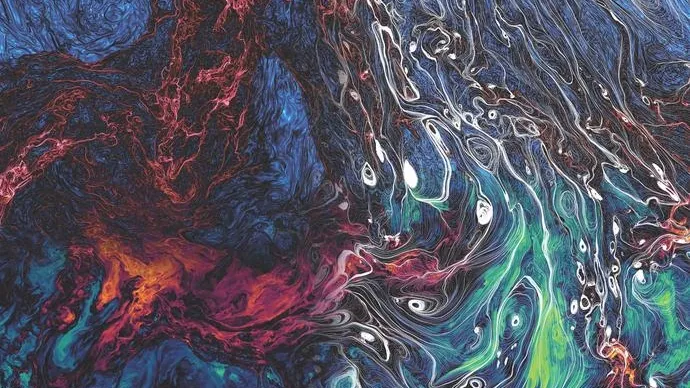
Unlocking the Cosmos: Stunning New Simulations Reveal the Secrets of Our Galaxy's Gases and Magnetic Fields
2025-05-19
Author: Wei Ling
A Cosmic Canvas of Gases and Magnetic Lines
In the vast expanse between the stars of our Milky Way lies the interstellar medium—a mysterious mix of gas and dust. A team of scientists has crafted a groundbreaking computer model to delve into the magnetism and turbulence of this cosmic soup, producing breathtaking images that are nothing short of abstract art.
The Key Role of Turbulence in Star Formation
The interstellar medium isn’t just pretty pictures; it plays a crucial role in processes like star formation and the movement of cosmic rays. However, its complexities remain largely unanswered. 'Turbulence is one of the great challenges of classical mechanics,' says James Beattie, a postdoctoral researcher at the University of Toronto, underscoring the profound mystery despite the pervasive nature of turbulence seen everywhere, from your coffee to the very fabric of our universe.
Creating Magnetic Fields from Cosmic Motion
The magnetic fields within this medium arise from the chaotic motion of gas and plasma. As these materials swirl, they generate electric currents that amplify magnetic fields—akin to the creation of Earth's magnetic field in its spinning core. Although the magnetic field of our galaxy is weak, its influence on cosmic events is tremendously powerful.
Revolutionary Simulation at an Unprecedented Scale
Beattie and his team utilized the SuperMUC-NG supercomputer in Germany to create a simulation that surpasses all previous models in resolution. This allows them to analyze vast spatial scales, from areas spanning 30 light-years down to structures 5,000 times smaller. 'For the first time, we can investigate these phenomena with incredible precision,' Beattie notes, opening new doors for understanding star formation.
Quantifying Magnetic Effects on Star Formation
Understanding how magnetic pressure impacts star formation is essential. Beattie explains, 'Magnetic pressure pushes outward against gravitational collapse, affecting star-forming nebulae.' This simulation enables scientists to quantify magnetic turbulence's effects across different scales, paving the way for deeper cosmic insights.
Validation Ahead: Testing the Model's Reliability
However, the real challenge lies in ensuring this advanced model's accuracy. The team is already comparing it against established data from solar winds and terrestrial observations, with promising results. 'This could revolutionize our understanding of space weather,' Beattie adds, emphasizing the importance of knowing how charged particles interact with satellites and humans in space.
The Future of Astrophysical Insights
As researchers continue to refine these models, the potential to unravel long-standing cosmic mysteries becomes tantalizingly close. Improved simulations could provide answers to questions that have evaded astronomers due to technological limitations, pushing the boundaries of our knowledge about the universe.





 Brasil (PT)
Brasil (PT)
 Canada (EN)
Canada (EN)
 Chile (ES)
Chile (ES)
 Česko (CS)
Česko (CS)
 대한민국 (KO)
대한민국 (KO)
 España (ES)
España (ES)
 France (FR)
France (FR)
 Hong Kong (EN)
Hong Kong (EN)
 Italia (IT)
Italia (IT)
 日本 (JA)
日本 (JA)
 Magyarország (HU)
Magyarország (HU)
 Norge (NO)
Norge (NO)
 Polska (PL)
Polska (PL)
 Schweiz (DE)
Schweiz (DE)
 Singapore (EN)
Singapore (EN)
 Sverige (SV)
Sverige (SV)
 Suomi (FI)
Suomi (FI)
 Türkiye (TR)
Türkiye (TR)
 الإمارات العربية المتحدة (AR)
الإمارات العربية المتحدة (AR)